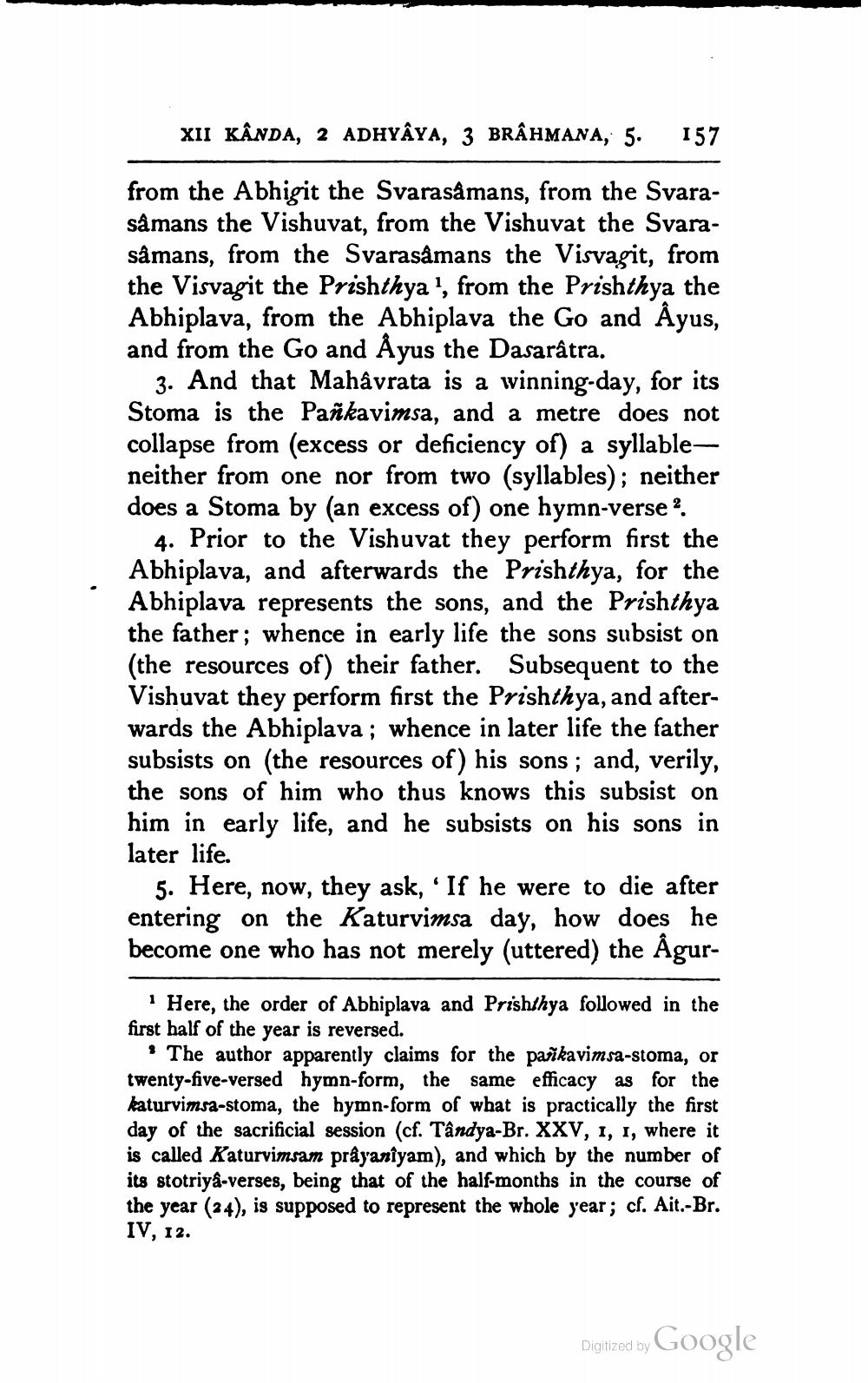________________
XII KANDA, 2 ADHYAYA, 3 BRAHMANA, 5. 157
from the Abhigit the Svarasâmans, from the Svarasâmans the Vishuvat, from the Vishuvat the Svarasâmans, from the Svarasâmans the Visvagit, from the Visvagit the Prishthya', from the Prishthya the Abhiplava, from the Abhiplava the Go and Âyus, and from the Go and Ayus the Dasarâtra.
3. And that Mahâvrata is a winning-day, for its Stoma is the Pañkavimsa, and a metre does not collapse from (excess or deficiency of) a syllable— neither from one nor from two (syllables); neither does a Stoma by (an excess of) one hymn-verse 2.
4. Prior to the Vishuvat they perform first the Abhiplava, and afterwards the Prishthya, for the Abhiplava represents the sons, and the Prishthya the father; whence in early life the sons subsist on (the resources of) their father. Subsequent to the Vishuvat they perform first the Prishthya, and afterwards the Abhiplava; whence in later life the father subsists on (the resources of) his sons; and, verily, the sons of him who thus knows this subsist on him in early life, and he subsists on his sons in later life.
5. Here, now, they ask, 'If he were to die after entering on the Katurvimsa day, how does he become one who has not merely (uttered) the Âgur
1 Here, the order of Abhiplava and Prishthya followed in the first half of the year is reversed.
The author apparently claims for the pankavimsa-stoma, or twenty-five-versed hymn-form, the same efficacy as for the katurvimsa-stoma, the hymn-form of what is practically the first day of the sacrificial session (cf. Tândya-Br. XXV, 1, 1, where it is called Katurvimsam prâyanîyam), and which by the number of its stotriyâ-verses, being that of the half-months in the course of the year (24), is supposed to represent the whole year; cf. Ait.-Br. IV, 12.
Digitized by
Google




